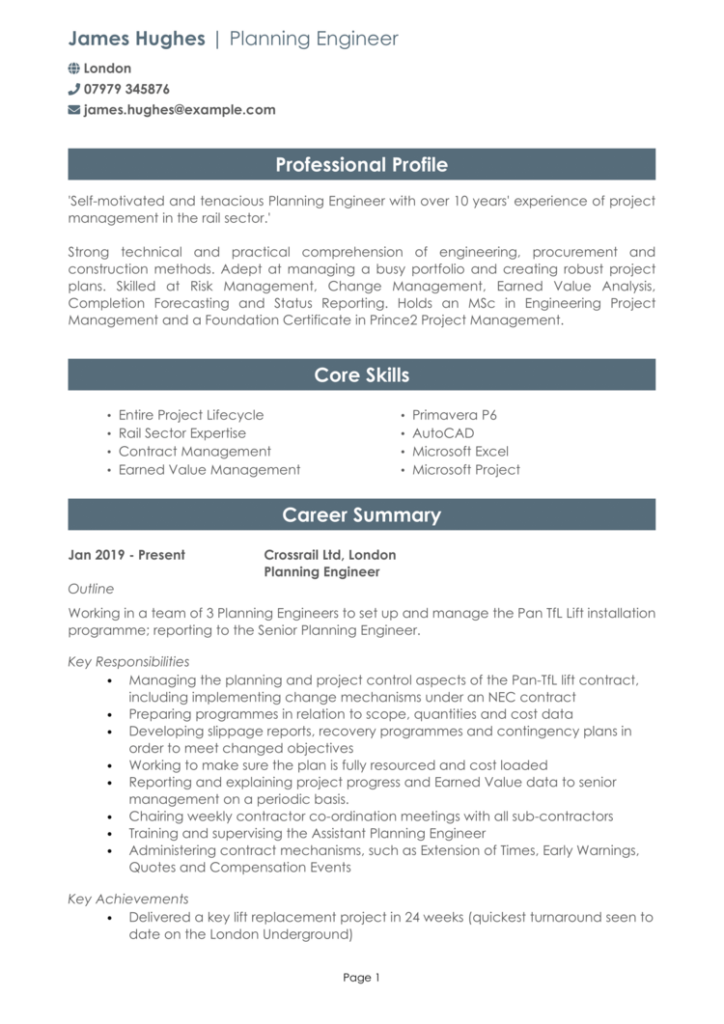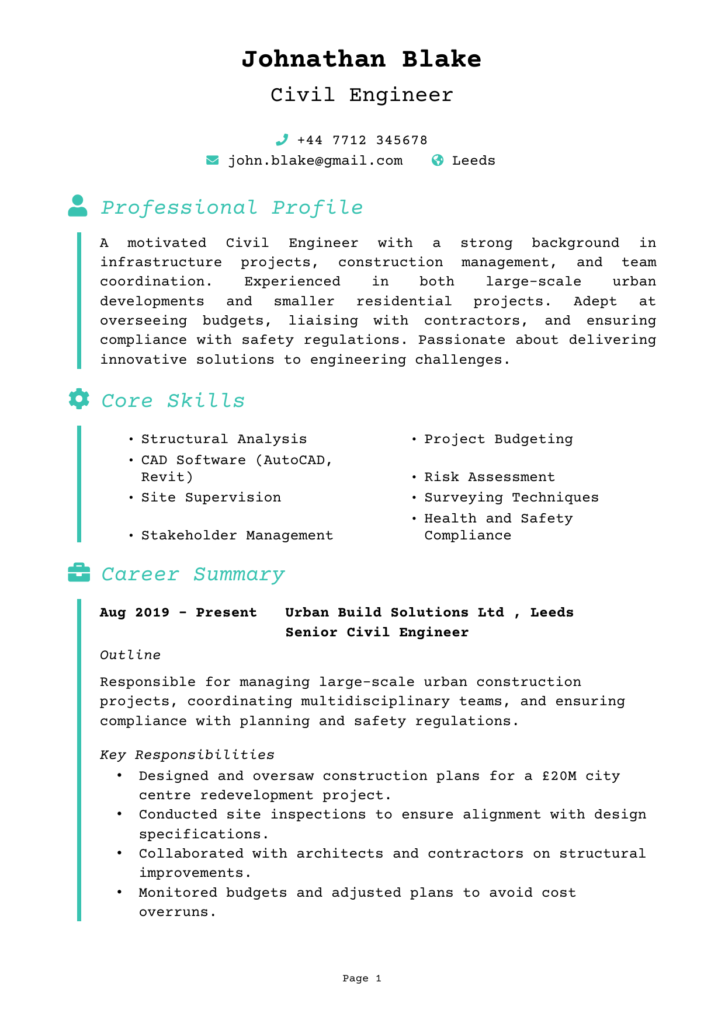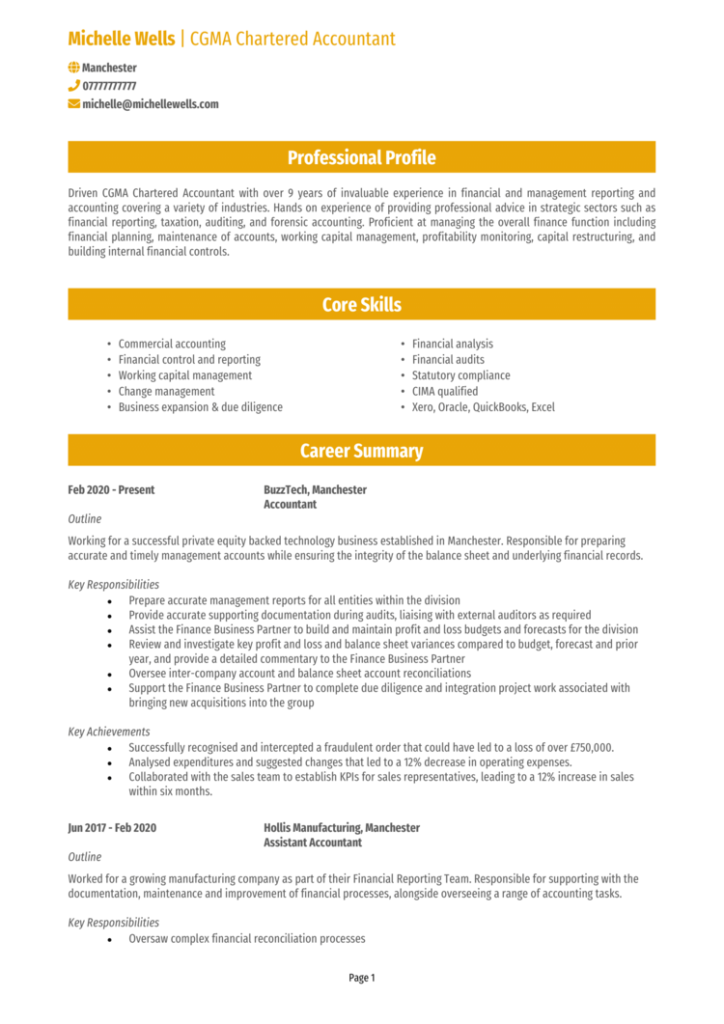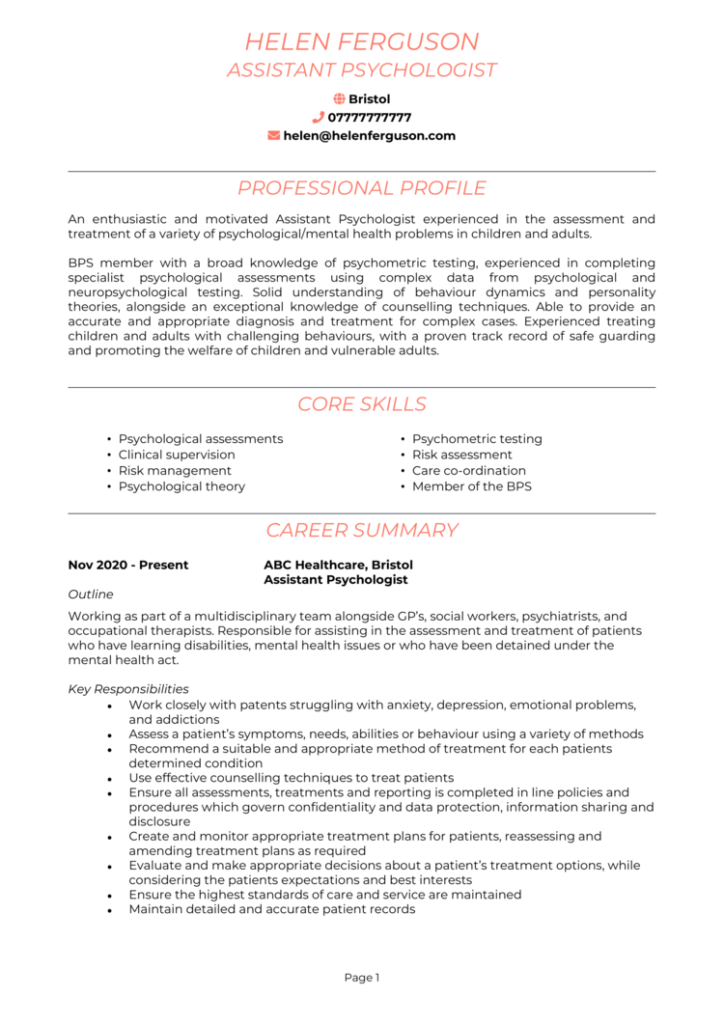A well-structured CV doesn’t have to be complicated. In fact, keeping things clear, concise, and professional is often the best approach: a simple CV ensures recruiters can quickly find the information they need.
Check out these 12 simple CV templates and examples, along with a guide that’ll walk you through the key steps to creating a basic CV that highlights your skills and experience while maintaining a clean, professional look.
Simple CV templates
These simple CV templates prioritise your skills and experience, not visual noise.
Basic CV templates
Use these basic CV templates to inspire your own concise, no-nonsense application.
Simple CV examples
These simple CV examples make use of minimalist and clean design choices.
How to write a simple CV
The key to a successful CV isn’t complexity; it’s clarity. If a recruiter has to dig through pages of unnecessary detail, they won’t stick around to see what makes you a great candidate.
This guide will walk you through how to write a simple yet effective CV, stripping away anything unnecessary and leaving only what truly matters.
You’ll need to cover the following 6 essential sections.
1. Name and contact details
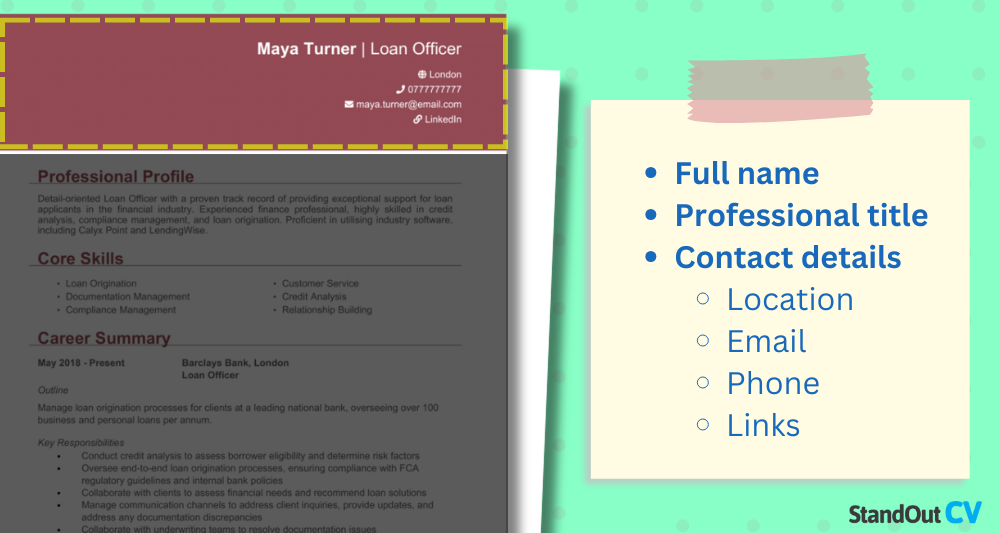
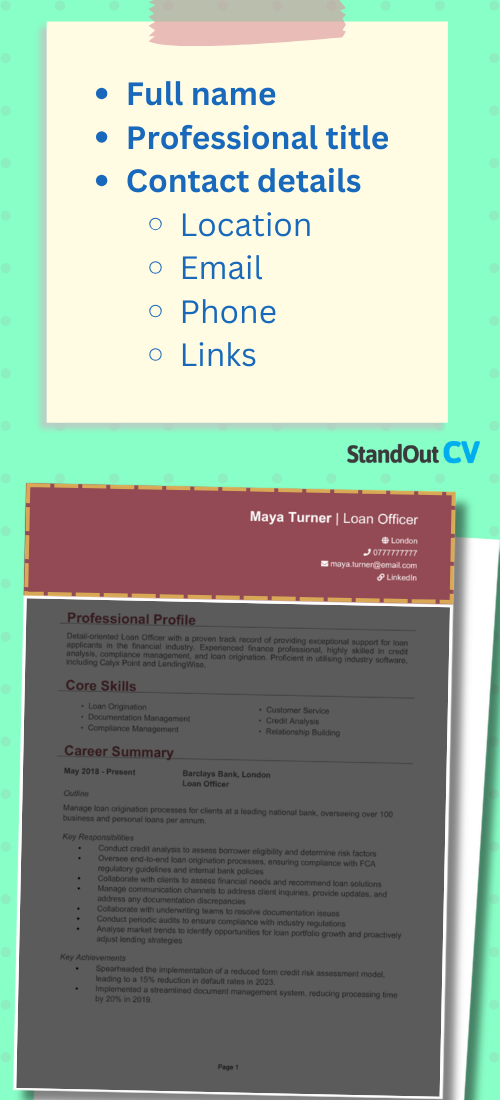
This section is as straightforward as it gets – no need to overthink it. Your name should be the biggest thing on your CV, right at the top, followed by your essential contact information, clearly presented in your CV headline for prospective employers to get in touch.
What to include:
- Your full name
- Phone number – Ideally your mobile number, so you’ll be able to answer job offers once they come pouring in.
- Email address – Use a professional email (avoid nicknames or personal handles).
- Location – Just your town or city you live, or the one you intend to work, is fine.
- LinkedIn profile (if relevant) – Make sure it’s updated and matches your CV.
What not to include:
- Date of birth – Not required, and only opens you up to age discrimination.
- Full address – This sort of unnecessary detail will only take up space.
- Marital status, religious affiliation, etc. – Employers don’t need to know this.
You’re free to add a photo of yourself, but it’s entirely optional, and risks adding unnecessary clutter.
2. Professional profile

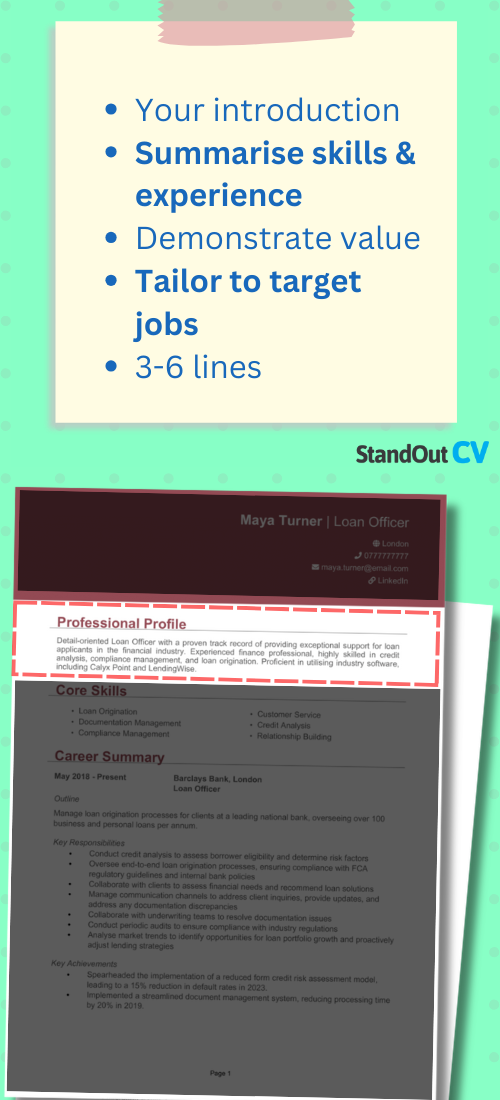
Your profile is your CV’s opening statement – a short and engaging summary of who you are and what you bring to the table. Less experienced candidates should consider a personal statement instead, which is longer.
The best way to keep this section effective? Keep it short and to the point.
- Who you are – A brief sentence on your current experience or background.
- Your key strengths – Highlight a few key skills that make you stand out, ideally tailored to the jobs you’re applying for.
- Your top qualifications – If you’ve got a degree or a pertinent certification, make a note of it here.
- The value you’ll bring – This is the overall objective of your profile – to convince recruiters that hiring you will benefit them and their company.
A strong CV profile grabs attention without wasting time. Avoid generic phrases like “hardworking individual” or “highly motivated professional” – they don’t add value. Instead, focus on what makes you a strong candidate for this role.


3. Core skills


Next, your CV should contain a column or two of short bullet points that provide recruiters a snapshot of your most important key skills. They should, at a glance, see why you’re the ideal fit for the role.
The best part? These are really easy to tailor to different jobs, so you should ideally switch some out depending on what you’re sending your CV for.
A useful tip is to include a mix of:
- Hard skills – Industry-specific skills such as “data analysis,” “graphic design,” or “copywriting.”
- Soft skills – Transferable skills like “communication,” “teamwork,” or “problem-solving”.
- Technical skills – If applicable, list software, coding languages, or tools you’re proficient in.
4. Work experience


Listing your skills is certainly valuable, but recruiters want to see how you’ve put them to good use in real-world, practical settings. This is the most important part of your CV, so keep it clear, structured, and easy to scan.
Start with your most recent job and working backwards, list your past roles, making sure to include:
- Job title, company name, and dates of employment – Keep this information consistent for every role.
- Outline – Summarise the company and your role within it in a short sentence or two.
- Responsibilities – List your key duties, making use of action words like “managed” and “assisted.”
- Achievements – Show measurable impact where possible – did you improve efficiency, increase sales, or help streamline a process? Sprinkle in some numbers wherever possible to make your impact feel more tangible.
Make sure to only include what’s necessary, and what’s helping you towards your target jobs. Briefly summarise old roles with a quick outline, and feel free to drop really old ones (think jobs over a decade ago) entirely.
5. Education


Generally speaking, your education section should be brief, as recruiters focus more on your experience. But it’s vital nonetheless, as it shows the foundations of your current expertise.
If you’re short on work experience, you can add a bullet point or two about relevant coursework – but avoid turning this section into an essay of its own.
Regardless, you should always mention:
- The qualification name
- The institution you earned it from
- The date you started and finished
If you’re looking to condense your CV further, you can drop anything that isn’t related to the jobs you’re applying for, or leave out old ones entirely (your GCSEs are less relevant once you’ve got a Master’s!).
6. Additional info


This section is for anything that doesn’t quite fit elsewhere but still adds value to your application. Keep it brief and relevant, focusing on the things that recruiters might be looking for.
You should consider including:
- Volunteer work – If it shows useful skills or experience, it’s worth adding.
- Certifications – Any extra training or courses that strengthen your skills.
- Professional memberships – If you’re part of an industry body, this can boost credibility.
- Awards – Special awards would help you stand out from most other candidates.
- Languages – If you speak more than one language, it’s worth mentioning, especially in international industries.
Avoid talking about generic hobbies and unrelated personal interests – it’s nice that you “enjoy watching movies with friends”, but will that help earn you the jobs you’re applying for?
How to create a simple CV format
When it comes to making a simple and clean CV, the formatting is just as important as keeping the content trim and to the point.
Following these simple formatting principles will help ensure your CV gives recruiters as easy and pleasant a reading experience as possible.
- Make use of bullet points – Bullet points make your CV easier to scan and help recruiters quickly identify key skills and achievements. Instead of long paragraphs, break down responsibilities and accomplishments into short, clear statements.
- Create clear sections – Organize your CV into distinct sections (e.g., Work Experience, Skills, Education) with bold headings. This ensures recruiters can navigate your CV easily and find the information they need at a glance.
- Choose a readable font – Stick to professional fonts in 10pt to 13pt size for body text. Avoid decorative or script fonts, as they can be difficult to read, especially on different screens.
- Maintain consistent spacing – Keep a uniform structure by using the same line spacing and margins throughout your CV. Different line spacing will add unnecessary visual complexity to your CV.
- Use white space effectively – Don’t overcrowd your CV with text – leave enough space between sections and around the page to improve readability. A well-balanced layout helps guide the reader’s eye smoothly across your CV.
- Limit graphics and colours – Stick to a clean and simple design by avoiding excessive colours, images, or fancy layouts. Overuse of visuals can distract from your content and make your CV appear unprofessional.
- Keep it short and to the point – Recruiters often spend only a few seconds scanning each CV, so limit the length to one or two pages. Focus on relevant experience and skills, removing unnecessary details to ensure every word adds value.




